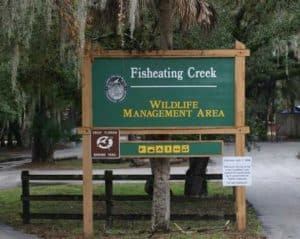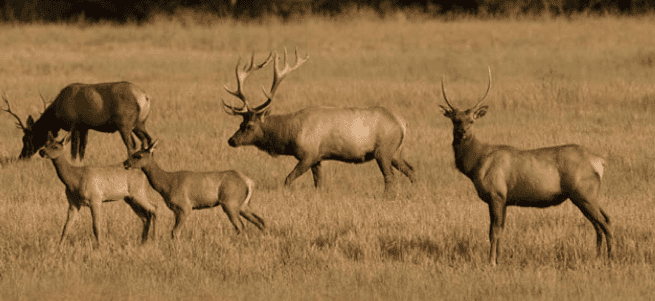By Beau Tallent
Most hunters will never set foot on public land. Some feel no need, since they have family land or a good hunting club. Others might not have a good place to hunt, but they are simply afraid of public land, thinking the land is overrun with other hunters and not safe.
How about a guarantee the hunting pressure will be light and the hunting will be good? Let us then tempt you with big bucks, bull elk, gobblers, alligators, dove, ducks—about any species you’ve dreamed of. And you get the adventure of hunting new woods, often on unique tracts of pristine land.
Quota hunts, or draw hunts, are the golden ticket to some great, unpressured public hunting. Quota hunts are offered by most state wildlife agencies, and there are also draw hunts on federal refuges and some municipally owned local lands. There are tons of options, yes, but I’d recommend getting your feet wet by applying for hunts in states that offer quota hunt application processes that are either completely free or at a nominal cost.
Here are some of my favorite “nothing-to-lose” quota hunts. There are many more gems out there—spend some time on the Internet, and you’ll find them.
Kentucky Elk and Trophy Bucks
Yes, Kentucky has elk—and some very nice bulls. With a transplanted population that has swelled to more than 11,000 elk, the 16-county area of southeast Kentucky has more elk than any state east of the Rockies.
Last season, hunters in Kentucky killed 595 elk, about 40 percent bulls and 60 percent cows. There were 900 permits awarded last season, and this year it jumps to 1,000 slots. In addition to the quota, pressure is further controlled by hunters now choosing between At-Large North or At-Large South hunting areas, plus there are three smaller limited-entry areas.
Kentucky has already produced three Boone & Crockett bulls. Archery hunting for bulls started in 2011, and the Bluegrass State is now a great chance for a Pope & Young class bull. The success rate for bowhunters on bulls is an incredible 60 percent.
It’s a tough draw to get a Kentucky elk permit, but it only costs $10 to roll the dice. There were almost 60,000 total applications for last season’s 900 permits, and only 10 percent of permits go to non-residents. The odds for a non-resident to draw a bull-elk gun tag were just 1 in 702. Odds for a bull-elk archery tag were 1 in 558. Go for a cow elk archery permit, and your odds are drastically better—1 in 67 for non-residents. If you don’t get drawn, no priority points are awarded, so your odds next year will be just as slim. But again, for $10, why not? The elk-permit process takes place in the spring. Familiarize yourself now with the process.
Kentucky also offers some prime WMA quota hunts for trophy whitetail bucks, and it’s just $3 to apply for a deer hunt. The deadline is Sept. 30, so there’s still time to apply for this year’s hunts. Here are some top options.
Ballard WMA: With 8,015 acres about 30 miles west of Paducah, Ballard contains a variety of habitats like sloughs and agricultural bottomlands and some hardwood stands. This year’s quota deer hunt is Nov. 2-3. Bucks must have a minimum outside spread of 15 inches. There are 150 hunter slots, and last year there were 1,080 applicants for this hunt. If you don’t get drawn, you’ll have a preference point and a much better chance next season. For more info and maps of Ballard WMA, click http://fw.ky.gov/kfwis/arcims/wma.asp?strId=224
Beaver Creek WMA: This mountainous area produced a B&C class typical-racked buck during the 2011 season. Located in McCreary and Pulaski counties, it has 17,753 acres of steep, mountainous terrain in mixed hardwoods. The quota deer hunt this season at Beaver Creek WMA is Nov 2-3. There are 330 slots, and last year only 405 hunters applied. That’s a 77 percent chance of getting drawn—apply, pack your hunting gear, and get ready to hunt prime Kentucky whitetail country on public land where you know you won’t be overrun by other hunters because of the quota. The area is under quality deer management regulations. For info and maps, go to http://fw.ky.gov/kfwis/arcims/wma.asp?strId=39
Big Rivers WMA: The tract consists of 2,488 acres, and only 40 hunters will be drawn for the hunt. Last year, 238 hunters applied for the hunt. The terrain ranges from steep to very steep upland hardwood forests to flat and rolling bottomland hardwood forest and agricultural lands bordered by the Ohio River to the west and the Tradewater River to the south. This year’s quota deer hunt is Nov. 9-10.
For more info on Kentucky quota hunts, go to http://www.fw.ky.gov/navigation.aspx?cid=289&navpath=C151
Florida’s Osceola Gobblers
The Osceola subspecies of wild turkey is considered by many to the best toughest of the Grand Slam birds to kill—not because they’re tougher to hunt, but finding a place to hunt them is hard. Most Grand Slam seekers opt to pay an outfitter. There are public options for a Florida gobbler, and if you go the quota-hunt route, you can avoid crowded turkey woods and build up priority points and get a draw eventually.
Here are a couple of top options for a Florida bird.
Green Swamp WMA: With 50,692 acres in Polk, Sumter and Lake counties, this huge areas offers a quota hunt the first weekend of the spring turkey season After that, there are 200 no-cost, daily quota permits available at the check station on a first-come, first-served basis for the remainder of season.
Florida also offers “Special Opportunity” Spring Turkey Hunts. For an Osceola, try Green Swamp West, which for these hunts is divided into three zones—A, B and C with just eight hunters selected for each 4-day hunt. This special hunt includes a special $100 fee on top of your non-resident hunting license and Florida Turkey permit. Still, it’s less expensive than most reputable guided hunts, and personally I’d rather go at it on my own than be puppet-mastered through a hunt by a guide.
Fisheating Creek WMA: This area consists of 18,272 acres of land in Glades County. The area stretches for 40 miles along the only free-flowing tributary to Lake Okeechobee. Cypress swamps, hardwood hammocks and Florida “pastures” are found on this beautiful area. The area provides critical habitat for black bear and the endangered Florida panther. You can apply for one of 15 no-cost quota permits for each of five turkey hunts. This coming season the hunts are March 1-4, 7-10, 14-17, 21-24 and 28-31 (west of U.S. Highway 27 only). East of Highway 27, there’s another option for “Special Opportunity” Spring Turkey Hunts with a chance for an Osceola. Fisheating Creek East offers two 7-day hunts with a quota of 10 for each.

Fisheating Creek WMA not only offers good quota hunts for Osceola gobblers, it’s a unique and beautiful area to hunt.
The application period for a Florida WMA turkey permit is Nov. 1-30. You may apply for as many different hunts, or as many times for the same hunt, as you like, but you must submit a $5 non-refundable fee for each application submitted. Non-residents are limited to 10 percent of the available permits for each hunt.
Create an online account with Florida Wildlife Commission to apply at https://license.myfwc.com/Customer/CustomerLookup.
Georgia’s Sweet On Non-residents
It would be fantastic for hunters who like to travel and experience new adventures if every state would take Georgia’s cue when it comes their quota systems. If you take nothing else from this article, do this the following. You’ll thank me… it may be a few years from now, but you’ll thank me.
Go to www.georgiawildlife.com/hunting/quota, and become familiar with Georgia’s system. You’ll need to create an online account, which takes only minutes. Then, every year, apply for a wide variety of fantastic quota hunts ranging from trophy deer, Eastern gobblers, southern-style dove and coastal waterfowl—even alligator. The beauty of Georgia’s system is there is no fee for applying, which means you can build priority points for free. You won’t get drawn for the premium hunts the first or even second year. It might take five years to get a gator permit—but eventually you will get a gator permit!
Georgia’s Wildlife Resources Division website has information on selection odds and past harvest data, and another good source for info is Georgia Outdoor News magazine at www.gon.com.
For the chance at quality Georgia buck, try Flint River WMA in Dooly County or B.F. Grant WMA in Putnam and Morgan counties. For waterfowl, go for one of the Butler Island hunts at Altamaha WMA on the coast. For dove, try Di-Lane WMA, which is also a great choice for a turkey hunt. Another turkey quota hunt worth going after is a River Creek WMA hunt. And don’t forget the alligator quota hunt. Georgia is one of the few states where non-residents can get a permit to hunt an alligator.
Even if you think you’ll never actually travel to Georgia and attend a quota hunt, set up your account, and start applying for everything to build up priority points. When it’s time to pick your First Choice for a specific hunt, don’t select one, and you’ll get a priority point after the selection process. When you’re ready for a new hunting adventure, cash in your priority points and get a quota permit. It’s too late for most of the 2013 quota hunts, but you can still apply for waterfowl and be ready for spring turkey.
Some day, that honey hole property you’ve been hunting might be gone, and public hunting might be your only option. Make it a quota hunt, and you’ll avoid the threat of crowded woods, and you’ll also likely be surprised at how good the hunting can be.








